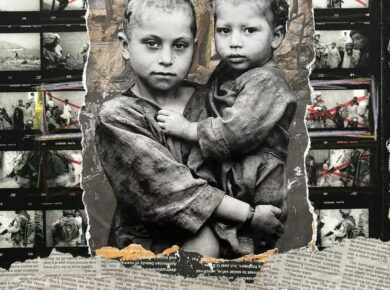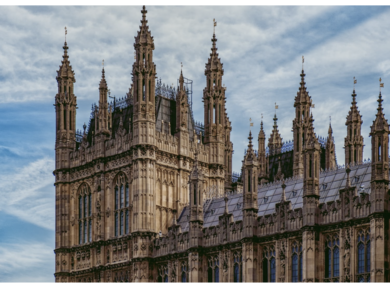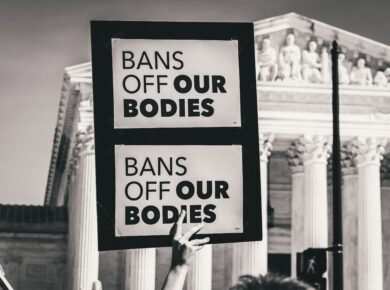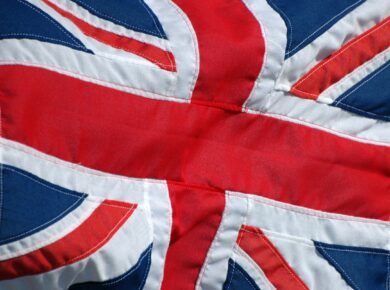Disclaimer:This blog post solely reflects the opinion of the authors and should not be taken to represent the general views of IPPR’s management/ editorial team or those of fellow authors.
The information coming out of Ukraine is increasingly watered down, contradictory, and needs to be verified. It is a real hustle, with fake videos, sabotage, denials and more. There is a reason why this disinformation phenomenon is becoming uncontrollable. The reason, other than the predictable chaos of war, is Russia’s strategy in Ukraine. The spread of disinformation is a common tactic in wartime, because if the enemy does not understand what is going on, it becomes easier to defeat. All the sabotage operations (e.g., Russian soldiers disguised as Ukrainians), or the news of “zero casualties in the Russian ranks” are precisely aimed at this: distracting, diverting, and demoralising the enemy.
The most striking historical example of this disorienting tactic is the Allied Ghost Army during the Second World War. Comprising 1,100 men, mainly actors and artists, it was tasked with misleading and deceiving the Nazis in France, Belgium, and Luxembourg between 1944 and 1945. The most sensational case was during the assault on the Rhine line, when the phantom army placed fake guns, planes and inflatable tanks 10 kilometres south of the real Allied contingent, spreading fake radio messages and simulating the noise of bridge building. The Germans took the bait, bombing those ‘ghosts’ while the real army crossed the Rhine undisturbed.
False narrative on Europe’s response
A narrative carried forward these days is about Europe’s failure to respond to the crisis in Ukraine. In addition to sanctions and the exclusion of Russian banks from the SWIFT system, individual countries have sent military and humanitarian aid to Ukraine since the beginning.
The EU decided to activate the European Peace Facility, a military support mechanism created in 2021 to prevent conflicts on EU borders. The assistance measures amount to €5 million, and they fund the provision of equipment and supplies to the Ukrainian Armed Forces, including lethal equipment – this is the first time the EU has provided lethal equipment to any country.
A few days after the beginning of the invasion allowed for better organised response: the EU and individual countries positioned themselves more strongly on the side-lines, providing more consistent and better aid. However, there was a first response from Europe to Russia’s attack in Ukraine, and it was misleading reading in the media how the European countries were taking no action and approaching Putin’s aggressive policy towards Ukraine in a disorganised manner.
Disinformation examples – Russian embassies’ twitter posts
Since the beginning of Russia’s attack, Russian embassies all over the world have been taking over twitter with similar – if not the same – messaging, retweeting each other and citing the same few sources.
The twitter profile of the Russian embassy in Italy shares the geopolitical analyses of Fatto Quotidiano, one of the most active newspapers in making misinformation about conflicts.
The Russian Mission in Geneva posted a video of controversial academic John J. Mearsheimer, which was subsequently retweeted by the Russian Embassy of the US, the Netherlands and many more. Other posts of the same twitter account, condemning the “war crisis” committed by the Ukrainian government in Donbass, also retweeted. It is clear that the message is one and not diversified in its sources – how Russia is legitimate to invade because of the atrocities of the Ukraine government on the people of Donbass, and because of the Threats imposed by western countries expanding their influence through membership to EU and NATO, or commercial opportunities.
Mearsheimer is best known for developing the neorealist theory of offensive realism, which sees the anarchic nature of the international system as the source of aggressive states’ behaviour. His argument is based on the assumption that state actors make political and military moves just to expand their territory, power, and sphere of influence, with the rational desire for hegemony in the anarchic international system.
The Russian embassy in the UK also posted a Mearsheimer article on its Twitter account with a sensationalist headline and a piece of text extracted from the article that seems to blame the West for the current conflict in Ukraine. This article seems to be very popular among Russia’s foreign offices and media outlets, presenting Mearsheimer as the only “man of science” that supports their narrative.
In Mearsheimer’s analysis of the post – Why the Ukraine Crisis is the West Fault – the Western countries are responsible for Russia’s aggressive invasions because they came too close to its borders with democratic ideals and economic opportunities. The EU and NATO came to unify and support these countries that Russia’s leaders wanted weak and divided to their benefit. It does not seem a convincing argument though, Russia wants to keep these regions (Ukraine and Georgia) divided and isolated for its pleasure and security, but who gives Russia such power over third countries? Therefore, neither the EU and NATO can be seen as responsible for the development and democratisation of these countries. Both Georgia, before the 2008 invasion, and Ukraine before this invasion, had expressed their desire to join the EU and NATO. Under international law no one may legitimately invade or attack another sovereign country to make a point, or to strengthen its borders. Although Russia may see it as a threat from western alliances, the reality is that each country has its own sovereignty and from that decides its own alliances and political agreements. The EU and NATO have been moving very cautiously on the membership decisions for these countries, exactly for the fear of “upsetting” Putin. On the EU Eastern Partnership initiative – which includes countries such as Ukraine – Mearsheimer argued: “not surprisingly, Russian leaders view the plan as hostile to their country’s interests” (p. 3).
Mearsheimer bases his arguments on distorted news of the “Revolution of Honour” in Ukraine in 2013-2014, stating it as a neofascist uprising against President Viktor Yanukovych’s government, the government that passed on an association agreement with the EU to accept Russia’s better financial proposal. However, this narrative can be seen as another example of fake news, since it was part of Russia’s propaganda at the time. According to some who took part, the insurrection was a broad-based grassroots movement begun by people fed up with Yanukovych and engaging individuals from all walks of life. The protest was made up of liberals, socialists, and libertarians, as well as nationalists, and both Christians and Atheists.
Another main narrative that President Putin pushed as the reason for invasion is that Ukraine’s history as a state is non-existent, and that it should be a part of Russia. However, Ukraine has a history dating back over a thousand years, and Kyiv was already a significant metropolis while Moscow was still a village.
Fog of war
It is a military phrase that became famously the title of a film, meaning the uncertainty in situational awareness experienced by participants in military operation. In the modern world, military intelligence and tracking systems help reduce the fog of war, however it is still a reality in all military conflicts.
How social media has been hindering Putin’s propaganda
Putin has been experiencing several protests against the war in several cities. With the spread of information, pictures, videos and support reaching anyone within seconds, Putin is struggling to keep information coming from Western countries away from his people. Disinformation is powerful not only against opponents but also within supporters, and with the rise of social media Putin’s effort to control information seems very challenging. The despot has immediately addressed the issue by censoring media and protestors opposed to the Ukraine invasion. However, to the discerning eye, the narratives on Ukraine’s false history linked only to Russia and those about what is going on daily in the conflict are easily disproved.
We will follow the development of the situation of Ukraine’s invasion with great sadness and despair, but we should be even more careful at debunking the daily information and try to unpack the truth.
Support Ukraine:
There are many ways to support the people suffering in Ukraine, please donate. Here are some helpful links:
British Red Cross: https://donate.redcross.org.uk/appeal/ukraine-crisis-appeal
UNHCR: https://donate.unrefugees.org.uk/general/~my-donation?_cv=1
Local Charity: https://www.facebook.com/donate/507886070680475
Ukrainian journalism:
The Kyiv Independent – https://kyivindependent.com/
The New Voice of Ukraine – https://english.nv.ua/
By Arianna Tanganelli,
Postgraduate student in MSc European Politics and Policy, specialised in Foreign Affairs and International Relations. Main areas the EU and China







